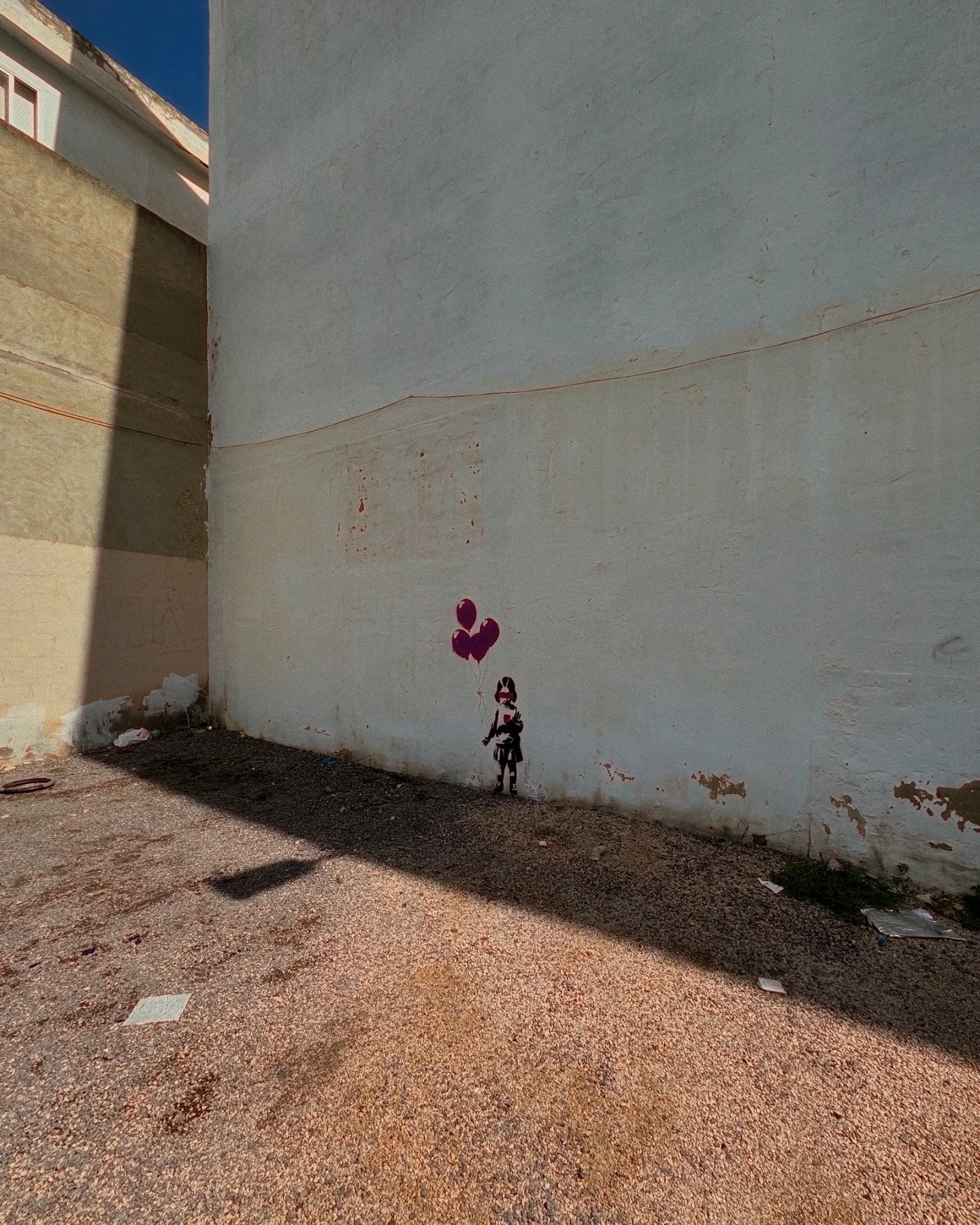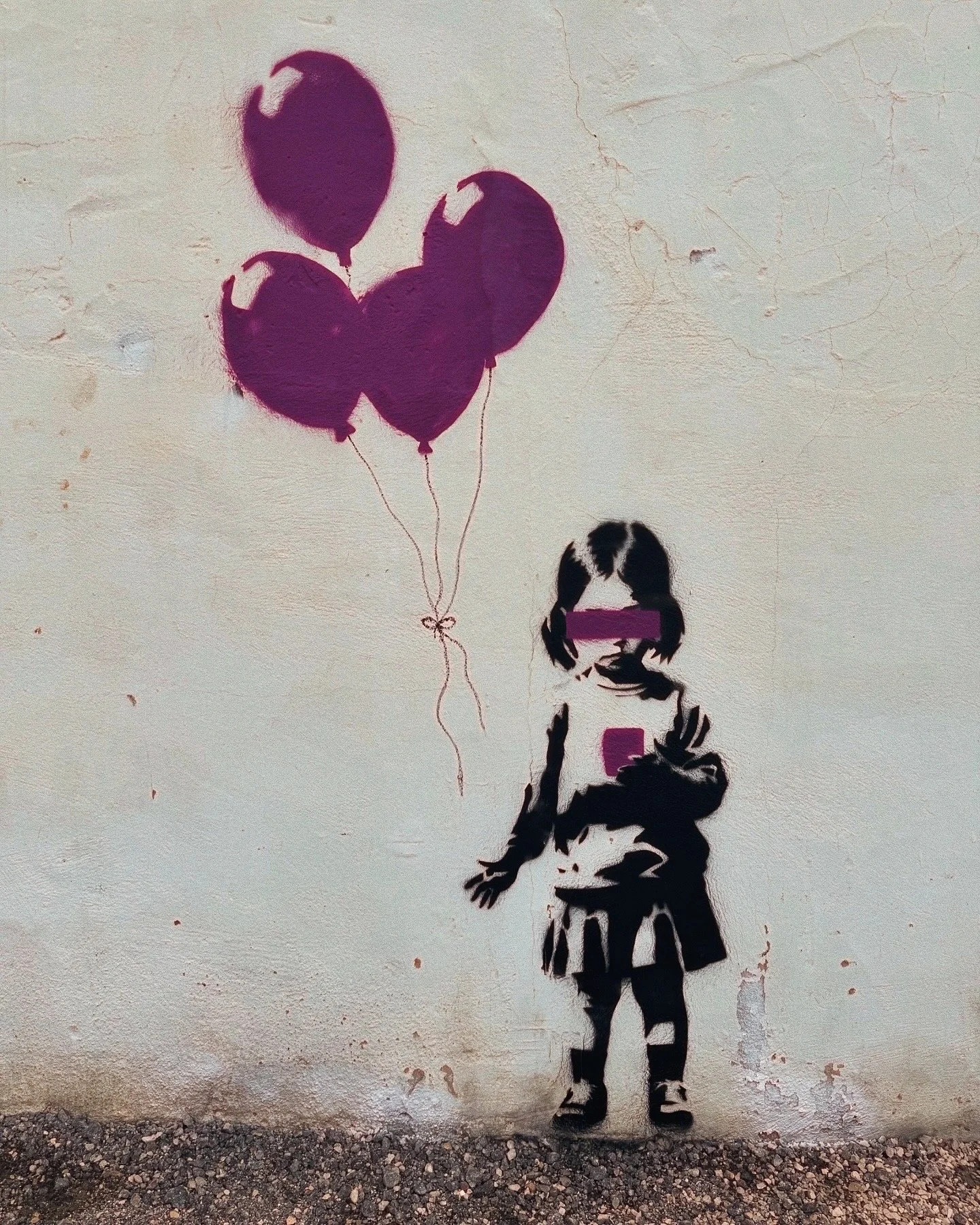Gone
Spray paint on wall, stencil technique
Executed 21st September 2024, Albacete, Spain
In the early hours of 21st September 2024, I returned to my hometown, Albacete, to create what has since become one of my most personal and emotionally charged street interventions. I titled it Gone. The piece appeared unannounced, painted quietly before dawn, as a way of leaving something behind, not as a mark of rebellion, but as a gesture of reflection, of return. It was my way of speaking back to the city where I once taught, where I first began to understand how the presence of screens was quietly rewriting the fabric of childhood.
The image is simple: a small girl stands alone, her eyes covered by a thick band of colour, her gaze fixed on the phone in her hands. Above her, four purple balloons float upward, their strings slipping from reach. The composition is minimal, but the story it tells feels immense. The balloons represent imagination, play, innocence, everything that once filled the space of childhood. The phone represents the tether, the illusion of connection that fails to hold them. For me, this scene captured a contradiction I see everywhere: the beauty and seduction of technology, and the silent erosion it brings beneath its glow.
I created this stencil, balancing precision and restraint. The black silhouette of the child stands out starkly against the cracked wall, that surface was important to me. Its imperfections, its roughness, became part of the work. The purple, vivid yet mournful, carried both the energy of play and the gravity of warning. I wanted the wall itself to speak, to show fragility, to echo the vulnerability of an entire generation raised behind glass.
When locals found the mural that morning, I hadn’t expected the reaction that followed. People stopped, looked and began to photograph it. Within hours, the image had spread through the very networks it questioned. A digital newspaper ran a piece about it, describing the work not as vandalism but as a cultural event, something unexpected that made people pause in their routines. That, for me, was everything. I have always believed that awareness begins in small, quiet interruptions. To see people stop, reflect, and talk was proof that the message had reached home, literally and emotionally.
Creating Gone in Albacete carried a weight unlike any of my London works. This was the city where I had seen the decline of play with my own eyes as a very naive teacher assistant, where toys sat untouched while screens absorbed attention. Returning years later to mark its walls was both an homage and a lament. It was an act of belonging, but also of rupture, acknowledging how far we’ve drifted from the very childhood we once understood so naturally.
Philosophically, Gone distils much of what I’ve been trying to express through my art. It is a portrait of absence disguised as presence. The child’s body is here, small and solid, but her mind has already departed, dissolved into the invisible ether of the digital. The balloons drift upward, out of frame, as symbols of what has already escaped us. The title is not descriptive; it is diagnostic. Gone is not about what comes after loss, it’s about the loss already in motion, happening now, quietly, beneath our eyes.
Looking back, Gone feels like a moment of truth in my practice. It reaffirmed what I believe art should do: exist in public space, in proximity to real life, to reach those who might never enter a gallery but still deserve to encounter meaning. It’s a work built on empathy rather than outrage, on tenderness rather than accusation. For me, it serves as a reminder that awareness, like childhood, is fragile, and if we don’t hold on to it, it too will vanish.



